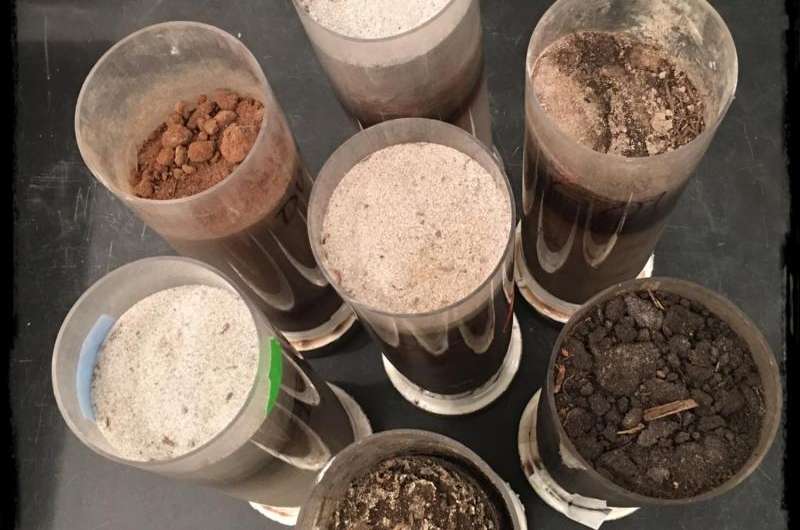Protecting soils to mitigate climate change

If you were an ant, you would see that soil has networks of pores and channels that weave through the soil like interconnected straws. They're formed underground by the different minerals that compose soil and as a result of movements or growth by roots, insects, and other living organisms. The pores in soil house gases and liquids, such as soil organic carbon and water.
Soil organic carbon, or SOC, plays a vital role in the carbon cycle. According to a recent study by researchers at the Pacific Northwest National Laboratory (PNNL), and published in Soil Biology and Biochemistry, the complexity of the carbon differs with the size of the pore that contains it, yet its decomposability is driven by its proximity to microorganisms, not its chemistry. These findings could provide a powerful framework for building a new generation of models simulating SOC dynamics and composition. It also provides a way to use natural processes to protect SOC so that it remains or decomposes in the soil rather than returning to the atmosphere.
In the natural water cycle, the hydrologic connectivity of soil pores surges as soil water content increases, and when pore channels fill with water, SOC and other nutrients can mix and redistribute. And when the soil is saturated, soil pores become increasingly connected (making them straw-like) by water, allowing movement of dissolved SOC between pores. This increases the likelihood that stored carbon will be transported to microbial-rich locations more favorable to decomposition. This diverse distribution of microbial decomposers throughout soil indicates that metabolism or persistence of SOC compounds is highly dependent upon short distances- think "sprints"-of transport between pores, via water, within the soil.
To demonstrate this, PNNL researchers saturated intact soil cores and extracted pore waters with increasing suction pressures to sequentially sample them from increasingly fine pore domains. Their objective was two-fold: Characterize the complexity of carbon in pore waters held at weak and strong water tensions. And then, evaluate the microbial decomposability of these pore waters by applying high resolution mass spectrometry to profile the major biochemical classes present.
The soil solutions were held behind coarse and fine pore "throats," and revealed more complex soluble carbon in finer pores than in coarser ones. Analysis of the same samples-incubated with fungi Cellvibrio japonicus, Streptomyces cellulosae, and Trichoderma reseei-showed that the more complex carbon in fine pores is not more stable - that is, it is at least as easily decomposed as the simpler forms of C found in coarse pores. In fact, the decomposition of complex carbon led to greater losses of it through respiration than the simpler carbon found in coarse pore waters. This suggests that repeated cycles of drying and wetting in soils may be accompanied by repeated cycles of increased carbon dioxide emissions. All this raises a question: Is SOC persistence primarily a function of its isolation in different sized pores?
All the study's incubated samples demonstrated that the fungi could decompose the SOC in pore waters within the first 48 hours of colocation. This means that the proximinty of microbes with the substrate, is the controlling factor in protecting carbon within the soil. The challenge is to use this information to improve our predictions of C persistence in soils and perhaps determine if and how we can take advantage of these natural processes within the soil on a much bigger scale so that we reduce carbon in the atmosphere.
"This research gave us some critical information that we'll use as a starting point for further analysis," said PNNL Vanessa Bailey, team lead in the microbiology group."
More information: V.L. Bailey et al. Differences in soluble organic carbon chemistry in pore waters sampled from different pore size domains, Soil Biology and Biochemistry (2017). DOI: 10.1016/j.soilbio.2016.11.025
Provided by Pacific Northwest National Laboratory




















